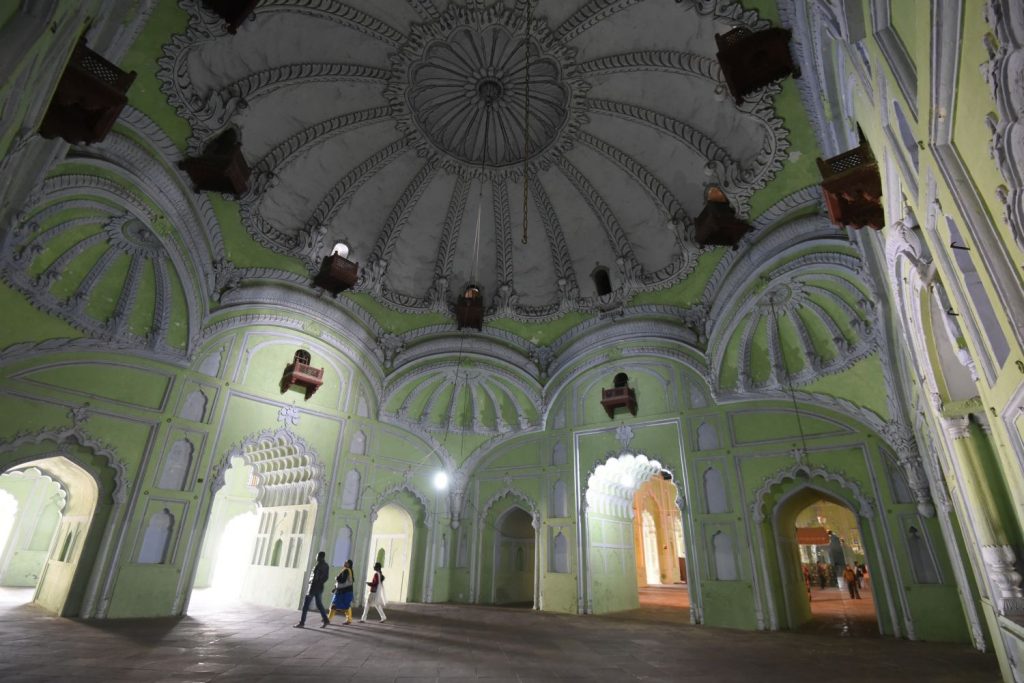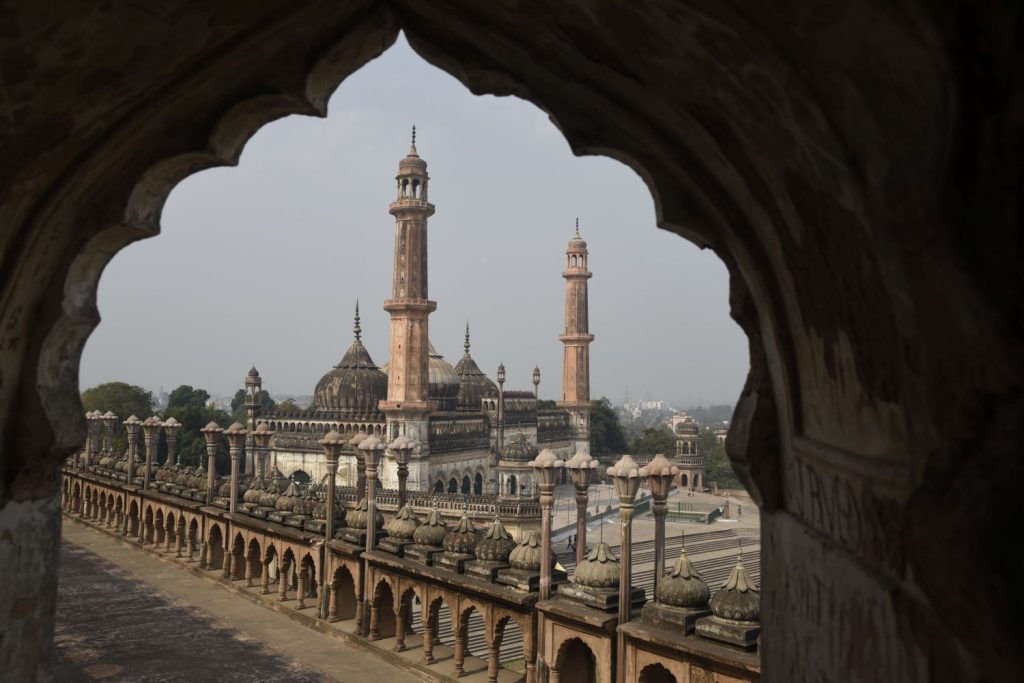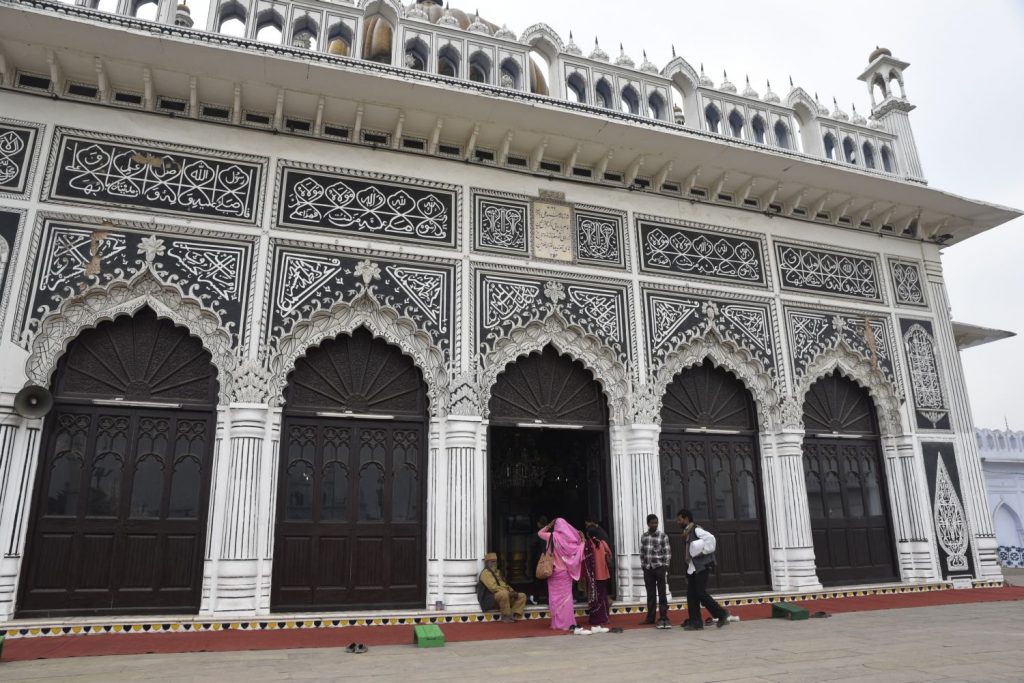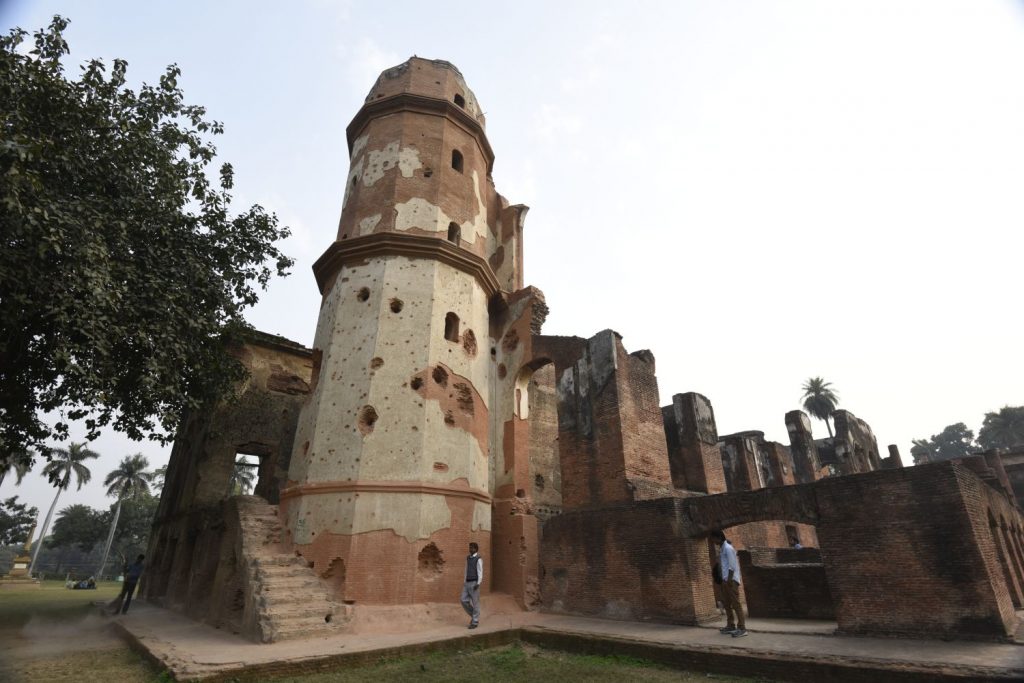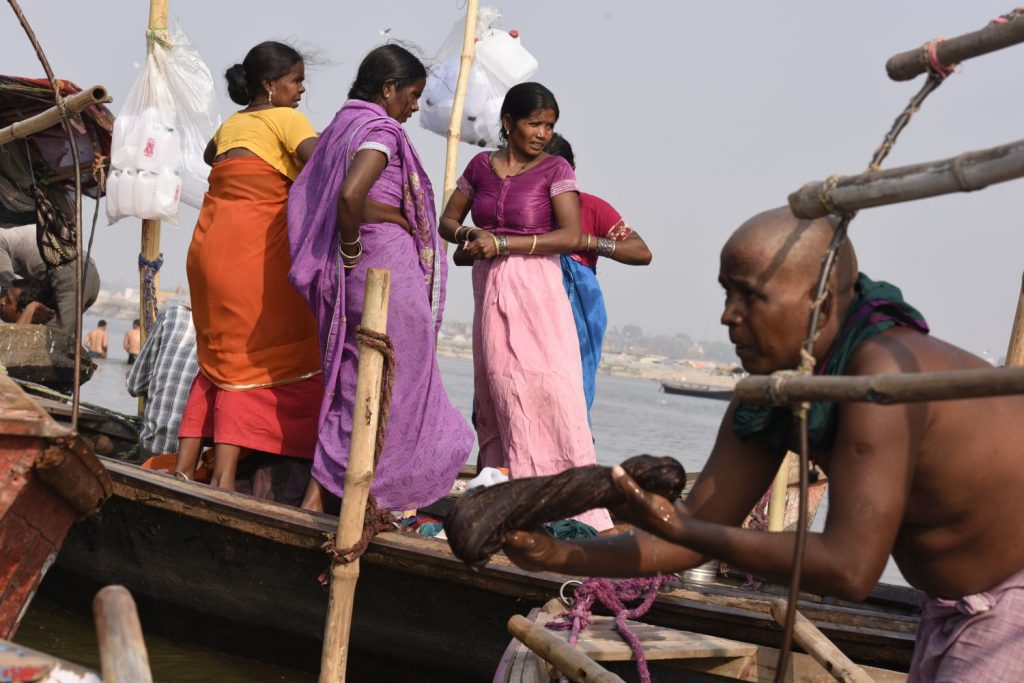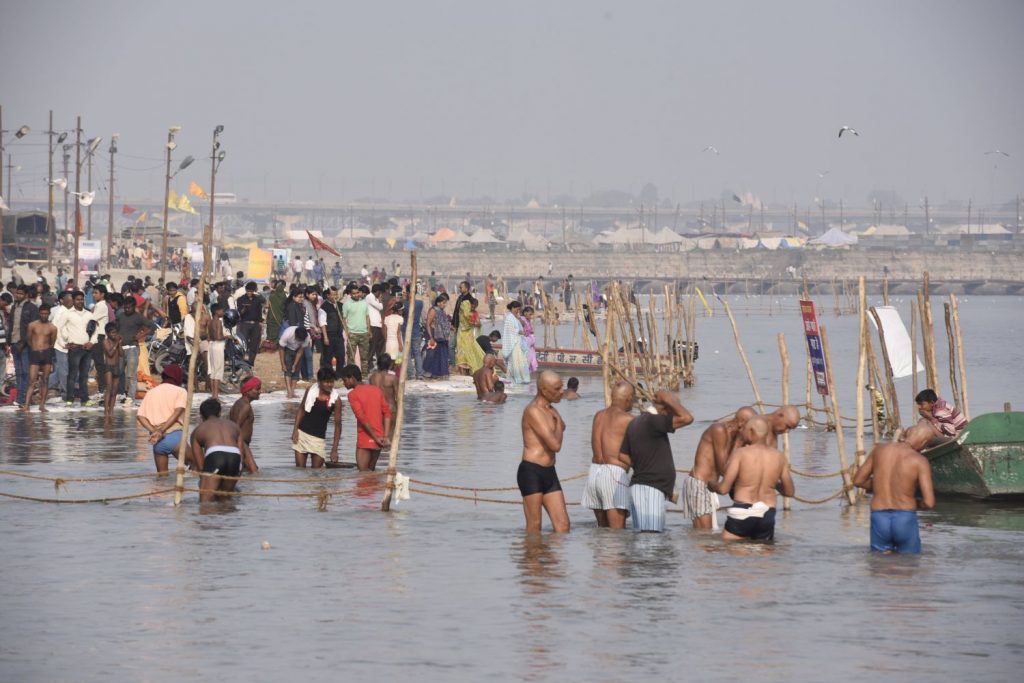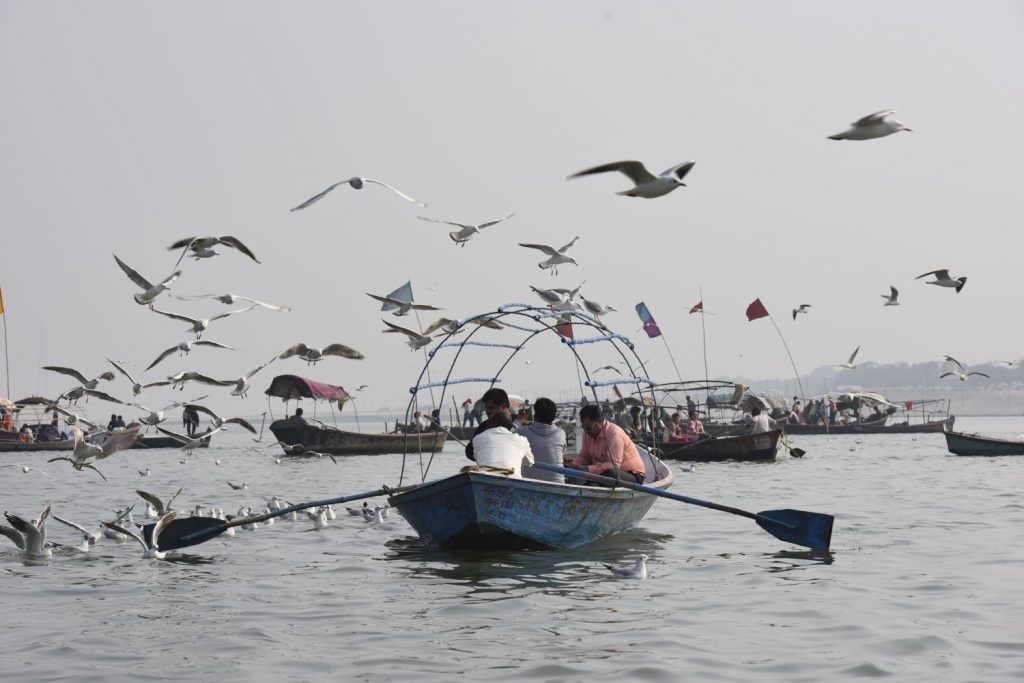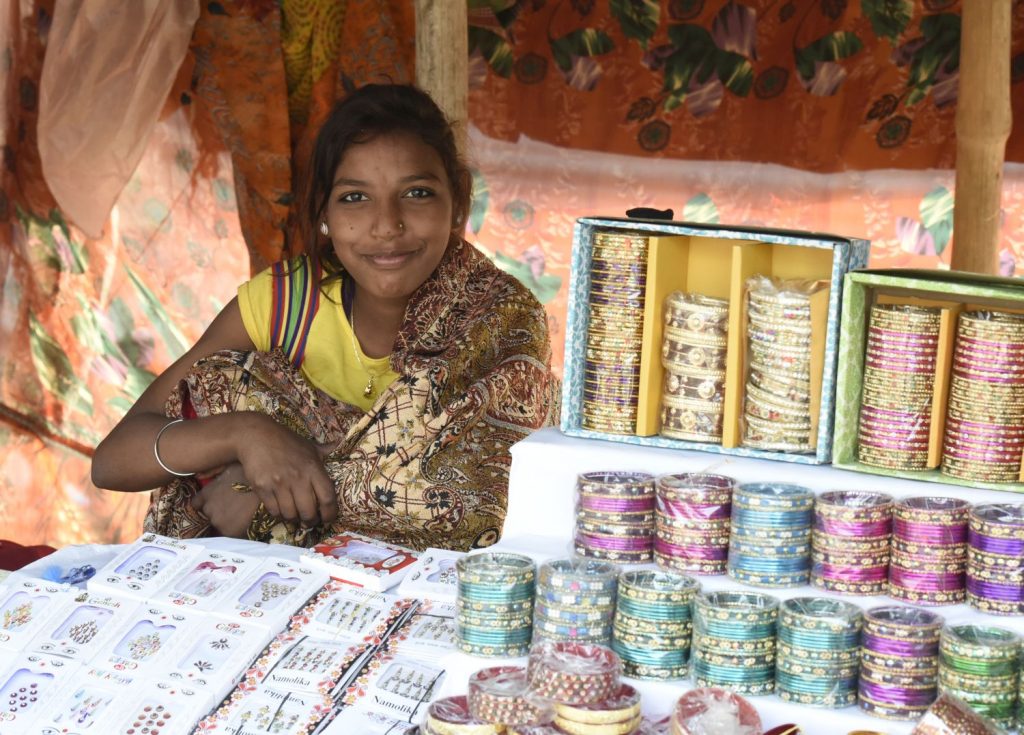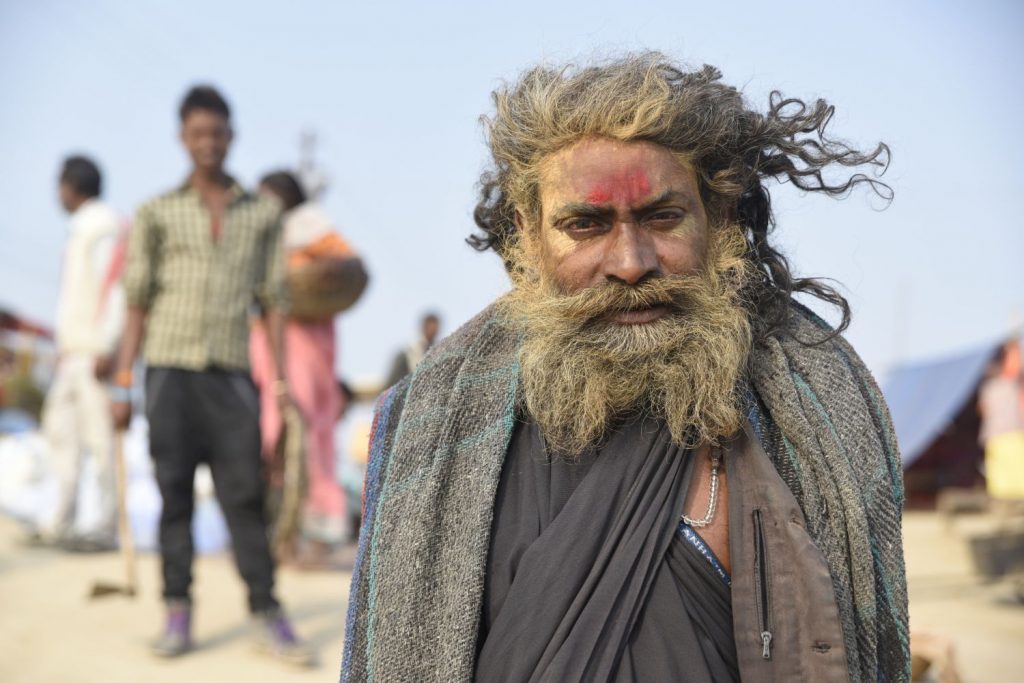
Lucknow and Allahabad are two quite different cities, the former especially significant in India’s Muslim history and the latter, despite its name, of special interest to Hindus.
After leaving Haridwar, I visited both cities, staying one night in each.
Lucknow is the capital of Uttar Pradesh, a major Indian state encompassing much of the Ganges River and its tributaries.
It was to here that the declining Mughal Empire retreated in the face of advancing British and Hindu forces in the 1700s.
On my list were the Bara (big) Imambara and Chotte (small) Imambara, two elaborate tomb complexes with onion domes and other Mughal architectural features.
Particularly impressive at the Bara Imambara was what they call the Labrynth, a series of winding narrow passageways at the upper level inside the tomb. These led out to a narrow catwalk with only a small railing – not much more than knee high – and a drop of about 50 feet to the lower floor below. I nervously went on it, but didn’t go very far as I’m not good with heights.
The Chotte Imambara was much smaller, but had beautiful calligraphy across the front and a decorative interior.
Often at these sites Indian tourists ask me to pose with them while they take photos on their cell phones. They will often get everyone in their group to take turns posing with me as though we are longtime friends.
In Haridwar one young Sikh got me to pose with him. I met him two days later and he proudly showed me on his smart phone that he had incorporated the still photo of us into a video with special effects. He was wearing a Canada Post jacket that he got from a relative in Canada.
Often when Indians take my photo, I will ask them for one in return if they look interesting. I tend to get more of these requests in places that are less touristy and where I’m more of a novelty. I think for some young Indians it is a status symbol to have Western friends.
Lucknow is also known as the location of a major siege by rebellious Indian sepoy troops against the British in the Indian Mutiny of 1857, which the Indians refer to as the First War of Independence.
For months, the British holed up in a series of buildings called The Residency until finally British troops relieved them. During the siege, thousands of British died and the buildings were seriously damaged. Today it is a pleasant park where you can walk amidst the ruins of the Residency, seeing explanations of who stayed in different buildings during the siege.
Carrying on to Allahabad the next day, on Wednesday, my main place to see was the Sangam, at the confluence of the sacred Ganges and Yamuna rivers. This is a major Hindu pilgrimage site and is the location every 12 years of the Kumbh Mela. At the last one in 2013, an estimated 32 million people converged on the main bathing day, while roughly 100 million people attended during the 55-day festival. Sometimes people are crushed to death in the crowds.
At this time it’s just the annual Magh Mela and far fewer people attend, though there is still a sprawling tent city near the site.
I took a boat, sharing with a couple of Hindu men with shaven heads, to the spot at the confluence of the rivers where I was able to watch and photograph some of the action.
Today I leave on the train this afternoon to Varanasi, the holiest of holy cities, but also one known for its aggressive touts. I arrive in the evening after dark, which isn’t the best, but I’m sure I’ll manage. My hotel, where I’ll stay three nights, the longest time in one place, is right at one of the ghats or steps down to the Ganges.
I fear that despite taking Dukoral and being very careful of what I eat and drink, I’ve come down with a case of Delhi belly. It’s to be expected in India, but hopefully doesn’t incapacitate me too much.
